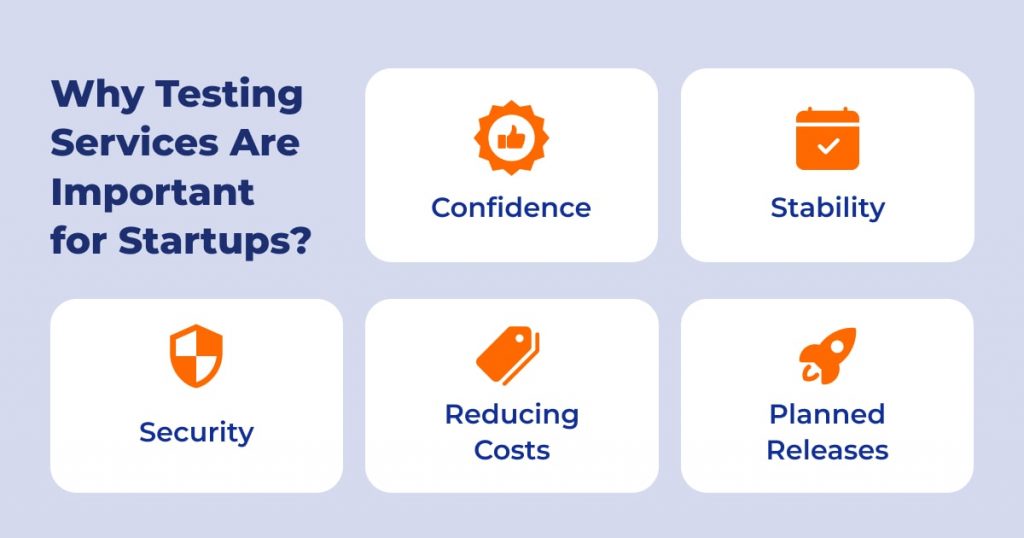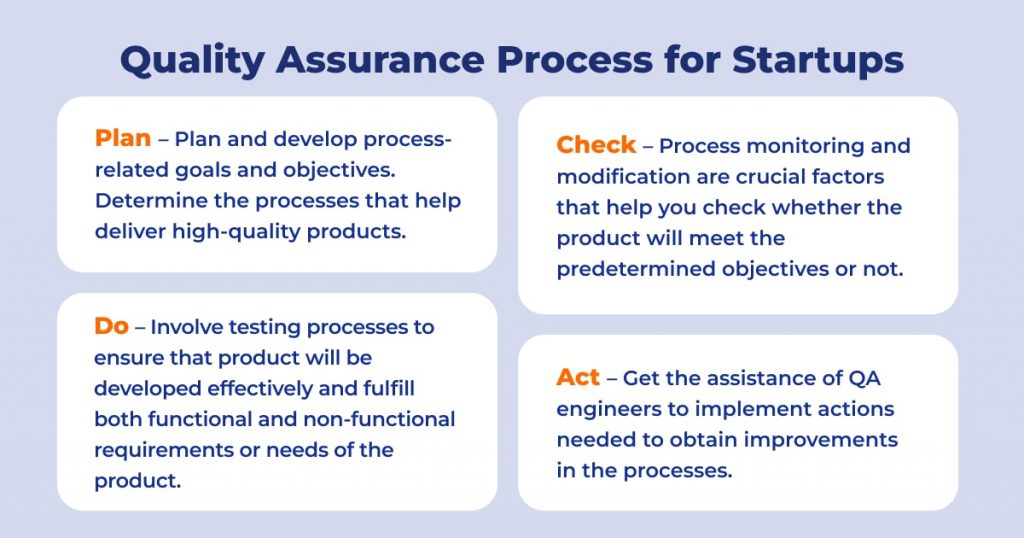Testing of MVP: What Is the Benefit for Startups?
by Yanina Shabanova | October 12, 2022 8:08 am
What comes to your mind when you hear the word “startup”? Great success stories, like Adam Neumann’s staggering growth of WeWork or Slack’s $1 billion valuation in just a year? These stories are truly inspiring. But is everything so successful in the startup industry?
According to Small Business Trends, only 2 out of 5 startups are profitable[1]. There can be many reasons for financial loss; one is a poorly made software product.
Today we will look at how you can protect yourself from errors at the developing stage and discuss whether there is any benefit from investing in testing for an unfinished product.
Not Yet a Product, But Already an MVP
So, you are at the idea stage. You are ready to experiment, try, and, most importantly — find out what people will pay for. At this stage, you likely need a minimum viable product (MVP) that doesn’t work perfectly but performs well enough to go to market and find its customers immediately.
Creating an MVP allows companies to test a product idea and evaluate the validity or failure of their business plan. The purpose is to create a usable product prototype (essentially a beta version) and release an unfinished version to potential users.

It seems reasonable to spend all development time solely on client-facing features. Everything else invisible to clients should be done as quickly as possible or skipped. In this case future maintenance or feature additions will be difficult, since most MVPs will eventually be abandoned. However, you may be concerned about implementing QA at this stage. Let’s consider this in more detail.
Concern 1: Writing Tests Increases Development Time
It may seem that writing tests will increase development time, but in fact, it will only reduce it. Higher test coverage prevents code changes from breaking functions and ensures that software operates as expected. This gives you confidence in every line of code the tests pass because the developers know which part to fix when the tests throw an error.
Here are some professional QA tips:
- Before launching your product, you need to thoroughly test the user flow to minimize complaints. Write end-to-end tests instead of manual quality checks. End-to-end tests are real-life scenario tests that your users have to go through. Once you’ve written your tests correctly, you can run them automatically[2] during development.
- When it comes to testing features and functions, there are unit tests. These tests pinpoint the root cause of an unexpected output or behavior. Even with minimal resources, you should always dedicate some resources to writing unit tests for critical features and functionality. With enough unit tests, the number of integration tests for an MVP can be kept to a minimum under resource-constrained conditions.
Writing tests is an investment you should make for your product in the long run. You can’t completely abandon this investment and still expect your product to be easy to maintain and scale.
Concern 2: MVPs Are Likely to Fail, so There’s No Point in Testing Something You’re Unsure About
It is an undeniable fact that the success rate of MVPs is low. However, this does not mean you should anticipate failure or build on that expectation.
You are chasing success, not failure. So why are you building your product and operating on the assumption that it will fail? If you want your customers to appreciate your product, you must be the first to think so. Design the MVP the way you want it to be perceived by the customers.
 [3]
[3]Concern 3. The MVP Will Be Refactored When It Succeeds
If you ask any development team what they think of alpha and beta products, often they will insist that they would rather remake it from scratch than refactor it piece by piece.
Developers busy maintaining and adding features to a product can eventually get tired of the refactoring work. Changing a particular part can break several seemingly unrelated elements. There is no way for developers to develop quickly in such an error-prone environment. It demotivates developers when most of their code doesn’t work or causes bugs due to unforeseen obsolete tech debt. In this situation, the most reasonable solution is to require a complete redesign of the product.
Can an MVP be considered an MVP if it requires an update to follow the product roadmap? No, definitely not. An MVP should only be updated when it hits a scalability bottleneck after product iterations. The initial product, which is expected to be rewritten entirely after its launch, is a prototype. It is never meant to be launched to market but to test the perception of the business idea, interaction, and experience of a potential product and to figure out what needs improvement.
Concern 4: If the MVP Fails, the Codebase Should Be Abandoned
It seems obvious to most people that if a product hasn’t found its market, the team’s only chance of success is coming up with a new idea and then building a new product from scratch. This was true perhaps a few years ago. Since then, many people have faced the same problem — not being able to use their previous work — and that’s why developers create a component library and then use the components to create a product.
The component library codebase is separated from the business logic. It can be reused as long as the visual design and interactive behavior of the most minor elements of the product (dropdown, autocomplete field, text field, etc.) do not change much.
Another possible way to reuse a piece of original work is to change the text or user flow of the product to test a new business idea. Because most products include common features such as a login system, shopping cart, etc. These parts can be kept and modified for a different business idea if the code base is built to be supported.

Let’s Add Confidence
Throughout your decision-making process, imagine that your product will be incredibly successful once launched. Challenge your team with all the assumptions made to ensure you are making the correct assumptions and, therefore, the right decisions. Consider how many resources a successful product deserves. The winning team must invest as much as possible and aim for success.
No matter how many resources you have, doing testing should be high on your to-do list because the benefits of testing cannot be replaced by anything else. This can be done by your team or our engineers, who are always ready to help[4].
Building a new product is a high-risk investment with the potential to generate very high returns. You cannot be afraid to bet when you are already in the game.
Learn more from QATestLab
Related Posts:
- only 2 out of 5 startups are profitable: https://smallbiztrends.com/2019/03/startup-statistics-small-business.html
- run them automatically: https://qatestlab.com/services/test-automation/?utm_source=blog&utm_medium=article&utm_campaign=mvp-testing-12102022
- [Image]: https://qatestlab.com/
- our engineers, who are always ready to help: https://qatestlab.com/request-a-quote/?utm_source=blog&utm_medium=article&utm_campaign=mvp-testing-12102022
- VivaTech 2025: Wearable AI, Next-Gen Robotics, and Assistive Accessibility Devices: https://blog.qatestlab.com/2025/06/27/vivatech-2025-wearable-ai-next-gen-robotics-and-assistive-accessibility-devices/
- Inside Shoptalk Europe 2025: Hunting Retail AI Insights : https://blog.qatestlab.com/2025/06/18/inside-shoptalk-europe-2025-hunting-retail-ai-insights/
- Automation Testing for Mobile Apps: Why It’s Essential and Our Key Services: https://blog.qatestlab.com/2025/05/13/automation-testing-for-mobile-apps-why-its-essential-and-our-key-services/
Source URL: https://blog.qatestlab.com/2022/10/12/testing-of-mvp/

